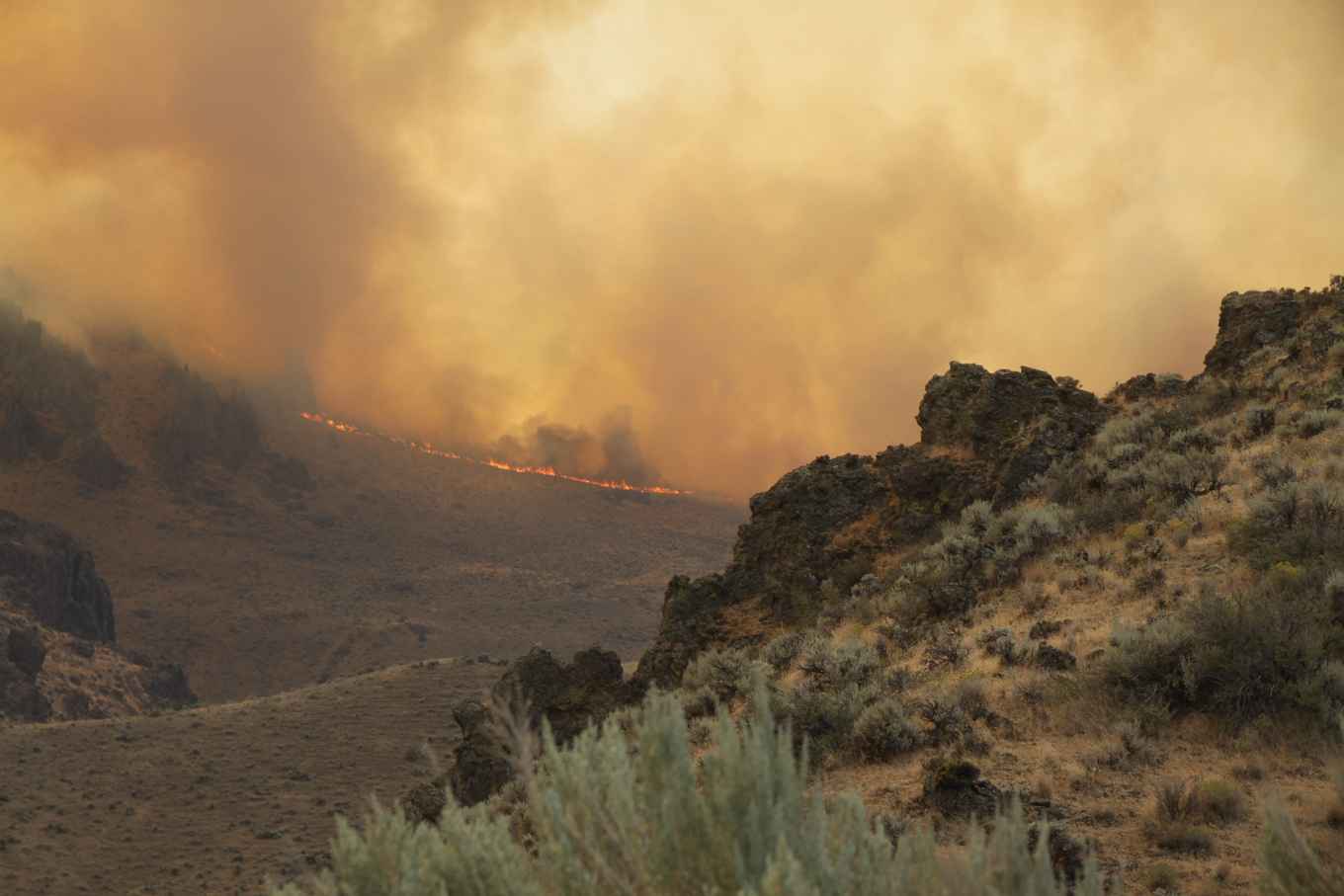Unburned islands support wildlife in fire ecosystems
5 July 2019

Fire regimes and fire impacts on wildlife are becoming larger with increasing global environmental change. Areas do not burn homogeneously and specific parts of the landscape may endure after fire. Such unburned islands of vegetation could potentially serve as fire refugia and decrease the negative impacts of fire on wildlife species.

Greater sage-grouse
The researchers studied the post-fire population responses of the greater sage-grouse, a large ground-living bird that inhabits the fire-prone sagebrush ecosystems of North America. They found that the greater sage-grouse populations were negatively affected by fire events, but that unburned islands showed stable or increasing population trends for this species.
The project was initiated and organised by UvA MSc student Earth Sciences Jasper Steenvoorden. During a research stay at the University of Idaho and the Oregon Department of Fish and Wildlife, he analysed time-series of sage-grouse counts at mating locations over a period of >30 years and estimated population trends before and after fire events using statistical models.
Satellite remote sensing
Researcher W. Daniel Kissling works at the UvA Institute for Biodiversity and Ecosystem Dynamics and has co-lead the study: ‘We combined the time-series information with a newly developed unburned island database derived from Landsat satellite imagery. We then tested whether pre- and post-fire population trends differed between burned areas and unburned islands, and to what extent post-fire habitat composition could explain such trends.’
‘I was very excited to see that our results showed that unburned islands within fire habitats can indeed reduce the negative effects of fire on wildlife and therefore help species to survive in such ecosystems’, says MSc student Jasper Steenvoorden. ‘Our study suggests that resource and wildlife managers could focus on maintaining areas of unburned vegetation within and outside fire perimeters to sustain sage-grouse populations following wildfire,’ adds Kissling.
Biodiversity and global change
The research group of Kissling at the University of Amsterdam studies how biodiversity varies across space and time, and how responses of species and ecosystems to changing environmental conditions can be predicted. The group combines biological and environmental datasets and applies computational approaches and ecological models to reveal how global change and human impacts influence species distributions and the structure of biological communities. Many data increasingly come from remote sensing (as the unburned island dataset) which allows to link detailed environmental and habitat information to biodiversity observations from the ground (here the time series of the greater sage-grouse). ‘Combining such datasets provides unprecedented opportunities to understand the distribution of species and ecosystems and the underlying causes of biodiversity decline’, says Kissling.
Publication details
Jasper Steenvoorden, Arjan J. H. Meddens, Anthony J. Martinez, Lee J. Foster, W. Daniel Kissling (2019). The potential importance of unburned islands as refugia for the persistence of wildlife species in fire‐prone ecosystems. Ecology & Evolution. DOI: https://doi.org/10.1002/ece3.5432